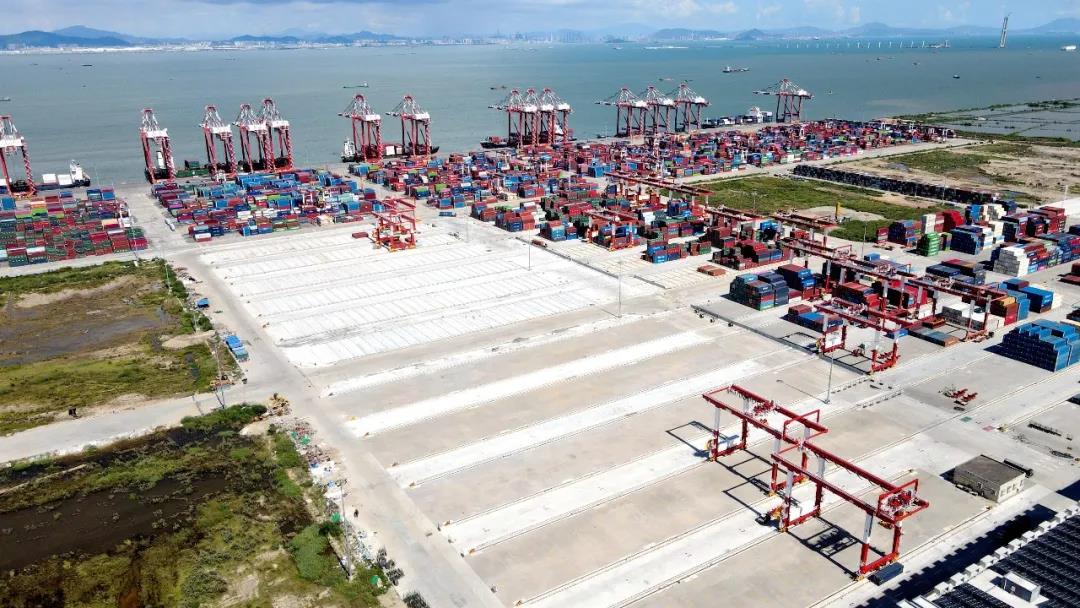The Semi-automatic Storage Yard of Nansha Phase III Passed the Handover Acceptance, Increasing the Throughput Capacity by 560,000 TEUs (Picture)

The Phase II Project of the Semi-automatic Storage Yard of Guangzhou Port Nansha Phase III was officially launched in September 2020. The construction content is the semi-automatic full container storage yard between the longitudinal fifth and sixth roads and the transverse second and third roads in the port area, equipped with six 41t-31m remote semi-automatic loaded container rail-mounted gantry (RMG) cranes; semi-automatic empty container yard between the longitudinal fifth and sixth roads and the transverse third and fourth roads, equipped with five 7t-31m remote semi-automatic empty container RMG cranes. At the same time, it includes supporting projects such as power supply, communication, drainage, and automation.
The supporting RMG cranes of the project and the original RMG cranes of Nansha Phase III can realize the N:N remote control semi-automatic operation mode, which increases the efficiency of on-site operation, reduces labor costs, and greatly improves the working environment of the operators.
The Phase II Project of the Semi-automatic Storage Yard of Guangzhou Port Nansha Phase III is a construction project with the “key difficulty to be conquered” in Guangzhou in 2021. Since the commencement of the project, all parties involved in the construction have worked together to overcome the impact of hot weather, tight work, and epidemic prevention and control at the site, and to advance the construction work in an orderly manner. The project will increase the loaded container yard area by 60,200 square meters and the empty container yard area by 50,700 square meters; the container yard capacity will be increased by 15,500 TEUs, and it is estimated that the annual throughput capacity of the container yard will be increased by 560,000 TEUs. (Chen Gaolin, Su Weijie)
News
- Xinsha Company Saw A Year-on-year Increase of 10.55% in Cargo Throughput in the First Quarter (Picture)
- 24,188 TEUs! The world's largest container ship calls at Nansha Port Area of Guangzhou Port (Picture)
- “Nansha-Hengyang” Pulp Special Line Launched (Picture)
- Good Start and Good Progress! Nansha Phase III Production Hit a Good Result (Photo)
- The National Consumption Promotion Month & Guangdong Automobile Consumption Festival Kicks Off in Guangzhou Port (Picture)